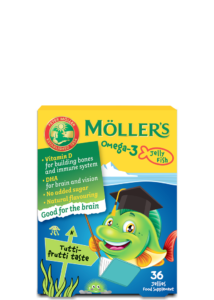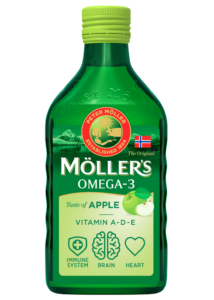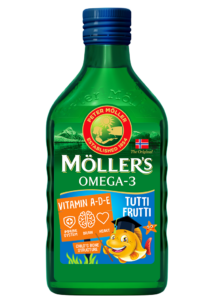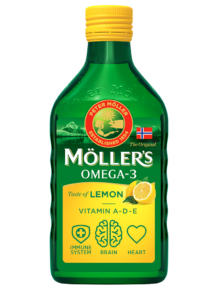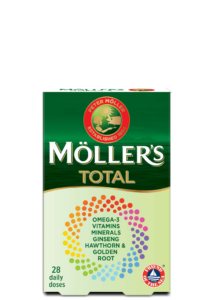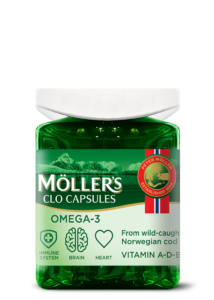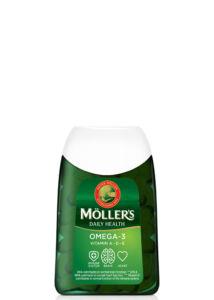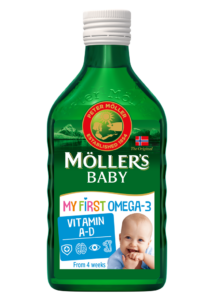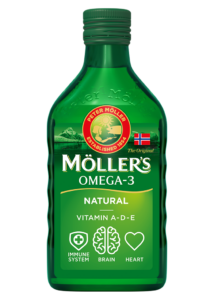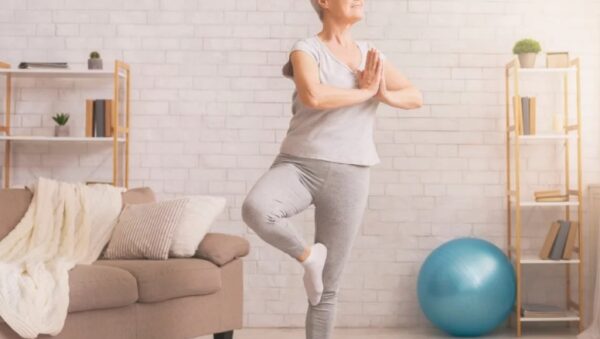They say that exercise and physical activity make childbirth easier. Pregnancy and childbirth are both incredibly stressful on the body and they lead to bodily changes. How long it takes to recover after childbirth is individual and exercising is a big part of it. We want to help you get back to normal as soon as your body allows it. Here are some postpartum exercise tips.
Home » Exercising after childbirth
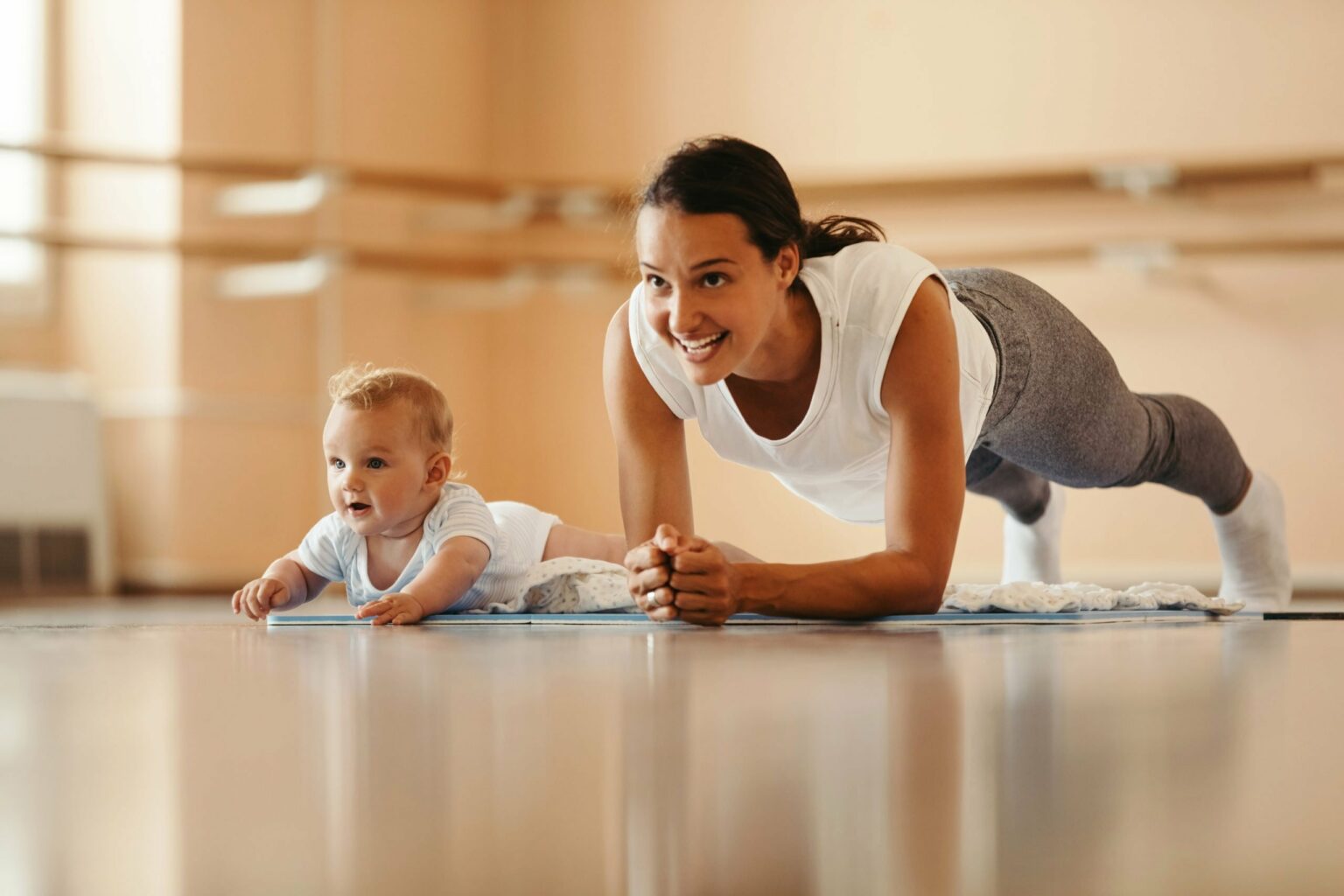
It is important to gradually start exercising again after pregnancy and childbirth, be it natural or by C-section. What you have been through has changed your body and it’s important that you are mindful and sensitive to your body when you’re getting back into shape. Start by gradually increasing your activities, the same way as you decreased them during your pregnancy. The most common “mistake” you can make is to delay getting back into your exercise routine.
You should not, however, start too early either. A rule of thumb is that you should not start exercising until the bleeding has stopped. This is obviously very individual, but if you have had a C-section, it is recommended that you wait about 6 weeks before commencing your training.
This does not mean you should avoid all activities during the first 6 weeks. You can, for example, go for a walk with the baby in the pram. Apart from walks, there are other exercises you can start with already the day after your baby is born, such as pelvic floor exercises.
Step one – Pelvic floor exercises
During pregnancy and childbirth, the pelvic floor is under increasing pressure and stretches to its maximum. Although the pelvic floor is highly elastic and also contracts quickly after childbirth, it will feel tight and tender for some time afterwards.
The hormone relaxine will be present in the body for up to a few weeks after childbirth. It is relaxine that can lead to instability in the joints, particularly in the pelvis. The abdominal and pelvis areas have been under enormous stress and the abdominal muscles have separated as the baby grew bigger. You should therefore take care and not start doing abdominal exercises to soon. It can take some time for the abdominal muscles to come back together. Pelvic floor exercises, on the other hand, are something you can start with early.
The first type of training you can start with is in fact pelvic floor exercises. You can do them in bed, standing or sitting, anywhere and anytime, and you don’t need any equipment. You can actually start with this already during your pregnancy. It will prevent, or help you avoid, urine leakage.
Here are some exercises you can do:
Squeeze and lift the muscles around the vagina, as if trying to stop peeing. Hold for 3-6 seconds and relax for as long in between the squeezes – or longer. Do these 10 times every day. Gradually increase the length until you can hold the squeeze for 10 seconds on each repetition. If you’re in doubt, ask your midwife or gynaecologist if you are doing the exercise properly, or if you need help with anything.
Another exercise you can start with already a few days after childbirth is an abdominal exercise. To do this exercise, lie on your back with your knees bent while you squeeze your abdominal and buttock muscles. You must postpone your abdominal exercises if you get a belly bulge between the abdominal muscles when you do this exercise.
By doing pelvic floor exercises regularly, you can avoid problems with incontinence, postpartum gas deflation and also improve sex.
You can also do this exercise when you lift something – your child, for instance. “Hold” the muscles around the vagina and rectum before lifting the baby, the grocery bags, the washing basket, the stroller etc. You will realise that you do a lot of lifts in a day. It’s also a good idea to hold the muscles before coughing or sneezing.
Follow some of these tips if you feel any pain in your pelvis:
- Accept all the help you are offered by your near and dear ones, and let them know if you need their help
- Get in shape after childbirth and start taking short walks that you increase gradually
- If your body can tolerate it, keep on with your normal physical activities, but also remember to rest
- Avoid sitting with your legs crossed, and change your sitting position often
- Avoid flexing your hips when standing, remember to spread the weight evenly on both legs when standing
Different exercises after C-section and virginal birth
The conditions for exercising are very different after C-section and vaginal birth, but one common denominator is pelvic floor exercises. You should start these exercises as soon as possible after giving birth.
Several factors determine when you can start to exercise after childbirth. Most women can begin with light and moderate exercises 4-6 weeks after giving birth, while women who have had a C-section should wait 8-12 weeks. If you had complications during childbirth, or if you had twins, commencing exercising may have to be delayed even longer, but this is a conversation you should have with your doctor.
If you had a routine delivery during your caesarean, you can start doing gentle exercises already at the hospital. As mentioned above, the first step in your training program should be activation of the pelvic floor. You should also get up and walk around a bit. A strong pelvic floor will both prevent and treat complications that can occur after childbirth.
If you have had a caesarean, then it may take 4-5 weeks before you feel yourself again. You must be careful with heavy lifting and shouldn’t lift anything heavier than your baby.
To stimulate your uterus to contract, lie in bed on your stomach. You can start doing this already when you are still in the hospital. This will also ease any strain in your back and pelvis. Place a pillow or two under your stomach and under your ankles.
It is important that the core muscles are back in the right position before you start with other heavier activities. A good exercise for the core is to lie on your back with your knees bent, as you push your lower back into the floor. Hold the position while gently moving one leg at a time in and out. Stand up if you feel any pain from the scar.
Exercising when breastfeeding
Breastfeeding your baby should not stop you from exercising. However, there are some precautions you can take to ensure the training goes unnoticed by the baby.
To avoid sore breasts and sour milk due to accumulated lactic acid during exercising, you should breastfeed your baby before your workout. The sour milk is not harmful to the baby, but it could have a sour and bitter taste, compared to the usually sweet and pleasant milk. If you want to breastfeed after your workout, it’s better to express 2-5 ml and wash your breasts before you offer the breast to your baby.
Moderate weight loss is considered safe when you breastfeed. Some cases suggest that high-intensity exercise might result in the baby not achieving satisfactory weight gain. This can be associated with reduced milk production, which in turn can be due to insufficient intake of fluid and nutrients. So, remember to get enough food and fluids.
Step two – Increase your activity level
You can start exercising once the bleeding has decreased and you are ready to increase your activity level. You are recommended to wait at least 6 weeks if you had a caesarean delivery. If you are bleeding after a workout, that is a sign that your body is not yet ready. If so, wait.
You don’t need to go to a gym to do physical activities and exercise. You may already have taken short walks. You can now increase the length of your walks. If you feel your body is up for it, you can even start with light jogging, both with and without a pram.
To keep your body active in other ways, you can also start doing exercises on the floor at home – with and without your baby.
After some weeks of pelvic floor exercising and strengthening of the core, you are ready for other activities, including cycling, swimming, dancing or something else you enjoy. Put on your favourite music and dance around with the baby in your arms.
Increasing the activity level also means the body needs more rest. Remember to allow time for that too. With a little one, your days are now likely a lot busier than before. It is important to get enough rest, or to postpone the training if you haven’t had enough sleep.
Strength training – what should you focus on?
When your body is more or less back to normal, you can start considering some strength training. Below are some tips and exercises you can do both at home and at the gym.
First and foremost, don’t do sit-ups until the abdominal muscles have healed. This is important. These muscles are stretched a lot in the last trimester, and it can take anywhere from 8-10 weeks for them to heal. As mentioned above, it is also important to squeeze and hold the pelvic floor when you do abdominal exercises. Avoid doing exercises involving excessive twisting until the abdominal muscles have healed.
The following exercises should be avoided until the abdominal muscles have healed and you have strengthened the pelvic floor:
- Squats
- Deadlifts
- Sit-ups
- Plank
- Lunges
The following are examples of some exercises you can do at home:
- Abdominal contraction. Stand on your arms and legs. Keep your arms under the shoulders and knees under the hips. Keep the back and neck in a neutral position. Connect with the pelvic floor and lift the area under the navel lightly and hold. This exercise activates and works the deep abdominal muscles. Do 8 repetitions in 3 sets. Hold for 10-20 seconds in each repetition. Pause for 10 seconds in between each repetition.
- Squat against the wall. Rest your back against the wall and activate the pelvic floor. Slowly lower yourself and hold the squeeze throughout the movement. Do 8-12 repetitions in 3 sets.
- Dynamic side plank. Place your elbow and lower knee on the floor. Straighten your upper leg. Lift and lower yourself while keeping your abdominal muscles activated. Do 8 repetitions in 3 sets.
- Leg lowers lying on your back. Lie on your back with your knees lifted towards the ceiling. Press your back against the floor and hold your abdominal muscles. Lower one leg at a time to the floor. Do not go lower than you can keep your lower back on the floor. Do 12 repetitions in 3 sets.
- Pelvic lift. Lie on your back with your knees lifted towards the ceiling. Keep your feet on the floor. Lift your buttocks and stretch your hips when you reach the top, while tightening your buttocks and slowly lowering yourself again. Make the exercise heavier by placing your arms behind your head or by lifting one leg at a time. Do 12 repetitions in 3 sets.
- Pelvic floor exercise – see instructions in the corresponding section.
Back, shoulder, core and leg exercises
As a new mom, and particularly if you are breastfeeding, you may become stiff in your neck and shoulders. It is a whole new world for you. You are lifting your baby a lot, something you did not used to do before. As with your core and pelvic floor, it is really important to exercise the back and shoulder. Do the following exercises when your body is ready for it. You can combine these exercises to a full workout:
- Strengthen the core with a pelvic tilt. Do the exercise lying on the floor or standing against a wall. Inhale, and when you exhale, pull your navel towards your lower back while tilting your pelvis slightly and tightening your buttocks and holding your pelvic floor muscles. Hold for 5-10 seconds and do the exercise 5-10 times. Increase the length of the hold as you get used to the exercise.
- Face pull/shoulder squeeze is a perfect exercise for those who get into a lot of peculiar breastfeeding positions. You can do the exercise with or without an elastic strap or weight. Do it standing or sitting. Remember to straighten your back – then pull the shoulder blades together, just as if you are holding something between them. Do 10-20 repetitions in 2 sets. If you have an elastic strap, fasten it around a post or something similar, grab each end of the elastic strap, straighten up and pull the shoulder blades together while pulling the elastic strap towards you.
- Chest and shoulder stretches will help to loosen up your tight breastfeeding muscles. Do the exercise sitting or standing with your back straight. Twist your hands and intertwine your fingers behind your back, pull the shoulder blades down and together as you inhale. As you exhale, lift your hands as far back and up as possible. Hold the stretch for 20 seconds and do it 2 times.
- Hip stretch to train stability. Do the exercise standing with one knee on the ground and the other leg in front in a lunge. Squeeze the buttock muscles on the back leg and feel a solid stretch on the front of the same leg. Stretch both arms up towards the ceiling and stretch your fingers as well. Hold the stretch for 20-30 seconds on each side. Do the exercise twice a day.
- Do the so-called “Superman” exercise to strengthen your core muscles. Lie on your stomach with your arms stretched out in front of you. Slowly lift your upper body off the ground, while being mindful to stretch your arms out in front of you. Squeeze your abdominal muscles and pull your elbows back. Pull them together and then lower them. Stretch your arms out again and lower your upper body and arms to the floor. If you can, also lift your legs off the ground. Do 5-10 repetitions twice.
- Diagonal lifts are excellent for core stability. Stand on your arms and knees with your hands under the shoulders and knees under the hips. Straighten your back, lift your navel in towards your lower back and focus on your left leg and right hand without twisting your body. Stretch out your right leg and left arm at the same time, and gently pull them in again before repeating. Do 5-10 repetitions on each side twice.
- Deep squats are good for mobility in the pelvis as well as a stable core and strong legs. Straighten your back and inhale while squatting deeply with your elbows between your knees. Hold this position while focusing on your breath and keeping a straight back. Hold onto something if you are struggling to hold the position. Stay in this position as long as you can, twice. Stop if you feel any pain or discomfort.
- Squats are great for the buttocks and thighs and they improve both stability and strength in the core and legs. Stand with the legs hip-width apart and use your baby as a weight if he or she is not too heavy. Sit down with your back straight, push your buttocks out and back before slowly standing up again. It is important to make sure the knees are not pointing inwards. Push them out throughout the exercise. Do 10-20 repetitions twice.
Why don’t you design a program consisting of a maximum of 18 sets per session? Remember to rest in between each repetition and each set. It is also important that you stop if you feel any pain or discomfort. Do not push yourself too hard. Use your baby as a weight whenever you can. When your body is ready for it, increase the weight and change to more advanced exercises. If necessary, please consult your doctor.
What is good health?
Do you have a good lifestyle?
Lifestyle simply means the way in which you live. Health and lifestyle go hand in hand. You might feel you have a good lifestyle if you are physically active, eat healthily and generally experience a sense of wellbeing. Conversely, if you want good health you should also have a good lifestyle.
Physical activity is the major contributor to a good lifestyle, but diet, drugs, stress, sleep and social conditions are also play an important role. Being able to use the body properly to avoid injury also affects lifestyle. Physical activity can also prevent depression and help you to recover more quickly from mental illness, both of which obviously affect your lifestyle.
Diet can be a difficult topic for many. Perhaps you eat too much or too little or maybe you find it hard to know what foods to combine to have a balanced diet. It’s also important to eat food that contains important vitamins, minerals and dietary fibre, omega-3 and antioxidants. On top of all this, you also need to get enough energy, protein and the correct fatty acids. The requirement for these nutrients changes throughout your life. When you are older you also have different requirements than children and younger adults. Women also have different requirements than men. Pregnant and breastfeeding mothers also have special requirements.
When you get older, you lose muscle mass and your body requires less energy and therefore less food. You may lead a less active life than you did before, which is why you require less food. However, your need for minerals, vitamins and other nutrients remains the same. Of course, there are plenty of healthy and active older people, but when you reach 70 to 80 years of age, it’s easier to become ill, especially during flu season.
Some steps you can take to improve your lifestyle and health are to:
- eat a healthy and varied diet
- stay active
- watch your weight
- avoid too much alcohol and don’t smoke
- get enough sleep
- think positive
- practise good hygiene
What is good quality of life?
The World Health Organisation (WHO) defines quality of life as a state where the individual can realise their potential, cope with normal stressful situations, work in a rewarding and positive way, and be able to contribute to others and society.
Quality of life is a wide and somewhat diffuse concept that includes joy in, and a desire for, life. These are values that are rather felt than measured, which in turn are based on personal environment and choices. Quality of life doesn’t necessarily depend on being healthy or sick. It’s the moments between worries, sorrows, problems and ailments that matter. For example, if you have a chronic illness, a feeling of mastery can be important when talking about quality of life.
To sum up, quality of life is a combination of health, lifestyle, networks and social support. It’s about experiencing joy, meaning in life, satisfaction, security and a sense of belonging, as well as being able to use your strengths. It’s also about feeling interest in life, coping with everyday situations and a being committed to something or someone. If you have good quality of life, you will be able to cope better with the inevitable stressful situations in life.
Our products
-
Möller’s Omega-3 Jelly Fish Cola
-
Möller's Omega-3 Jelly Fish Tutti Frutti
-
Möller’s Cod Liver Oil Apple
-
Möller’s Cod Liver Oil Tutti Frutti
-
Möller’s Cod Liver Oil Lemon
-
Möller's Total
-
Möller's Cod liver oil capsules
-
Möller’s Daily Health
-
Möller's My First Omega-3
-
Möller’s Omega-3 Jelly Fish Strawberry
-
Möller’s Cod Liver Oil Natural
Learn more
Exercise program for the elderly
Healthy Aging Healthy Bones
Healthy diet during pregnancy
Brain Healthy Aging
Good health, lifestyle and quality of life – What does it all mean?
Cod Liver Oil Healthy Aging
Get inspiration on our Instagram
This error message is only visible to WordPress admins
There has been a problem with your Instagram Feed.

